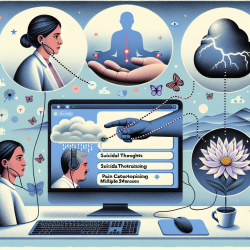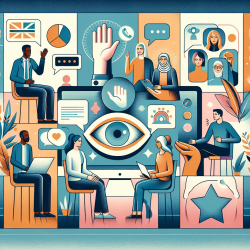Introduction
The field of speech-language pathology is continuously evolving, with new research and technological advancements offering innovative ways to improve clinical practice. One such advancement is the concept of digital phenotyping, particularly in the context of mood disorders. This blog explores how digital phenotyping can be integrated into speech-language pathology to enhance outcomes for children, drawing insights from the research article titled Digital phenotype of mood disorders: A conceptual and critical review.
Understanding Digital Phenotyping
Digital phenotyping refers to the real-time collection and analysis of data from digital devices to identify behavioral markers associated with various conditions, including mood disorders. This approach leverages data from smartphones, wearables, and other digital tools to provide objective insights into a patient's mental state. In the context of mood disorders, digital phenotyping can identify patterns such as changes in activity levels, communication frequency, and physiological markers like heart rate variability.
Implications for Speech-Language Pathology
Incorporating digital phenotyping into speech-language pathology practice can offer several benefits:
- Objective Data Collection: Digital phenotyping allows for the collection of objective data on a child's communication patterns, activity levels, and emotional states, reducing reliance on subjective reports.
- Early Detection: By identifying subtle changes in behavior and communication, digital phenotyping can facilitate early detection of mood-related issues, allowing for timely intervention.
- Personalized Interventions: Data-driven insights can inform personalized intervention strategies, tailored to the specific needs and patterns of each child.
Encouraging Further Research
While the potential of digital phenotyping is promising, further research is needed to fully understand its applications in speech-language pathology. Practitioners are encouraged to explore the following areas:
- Integration with Existing Tools: Investigate how digital phenotyping can be integrated with existing assessment and intervention tools in speech-language pathology.
- Longitudinal Studies: Conduct longitudinal studies to evaluate the long-term impact of digital phenotyping on child outcomes.
- Interdisciplinary Collaboration: Collaborate with researchers in psychology, psychiatry, and technology to develop comprehensive approaches to digital phenotyping.
Conclusion
Digital phenotyping represents a significant advancement in the ability to understand and address mood disorders, with potential applications in speech-language pathology. By embracing this technology, practitioners can enhance their ability to deliver data-driven, personalized care, ultimately improving outcomes for children.
To read the original research paper, please follow this link: Digital phenotype of mood disorders: A conceptual and critical review.










